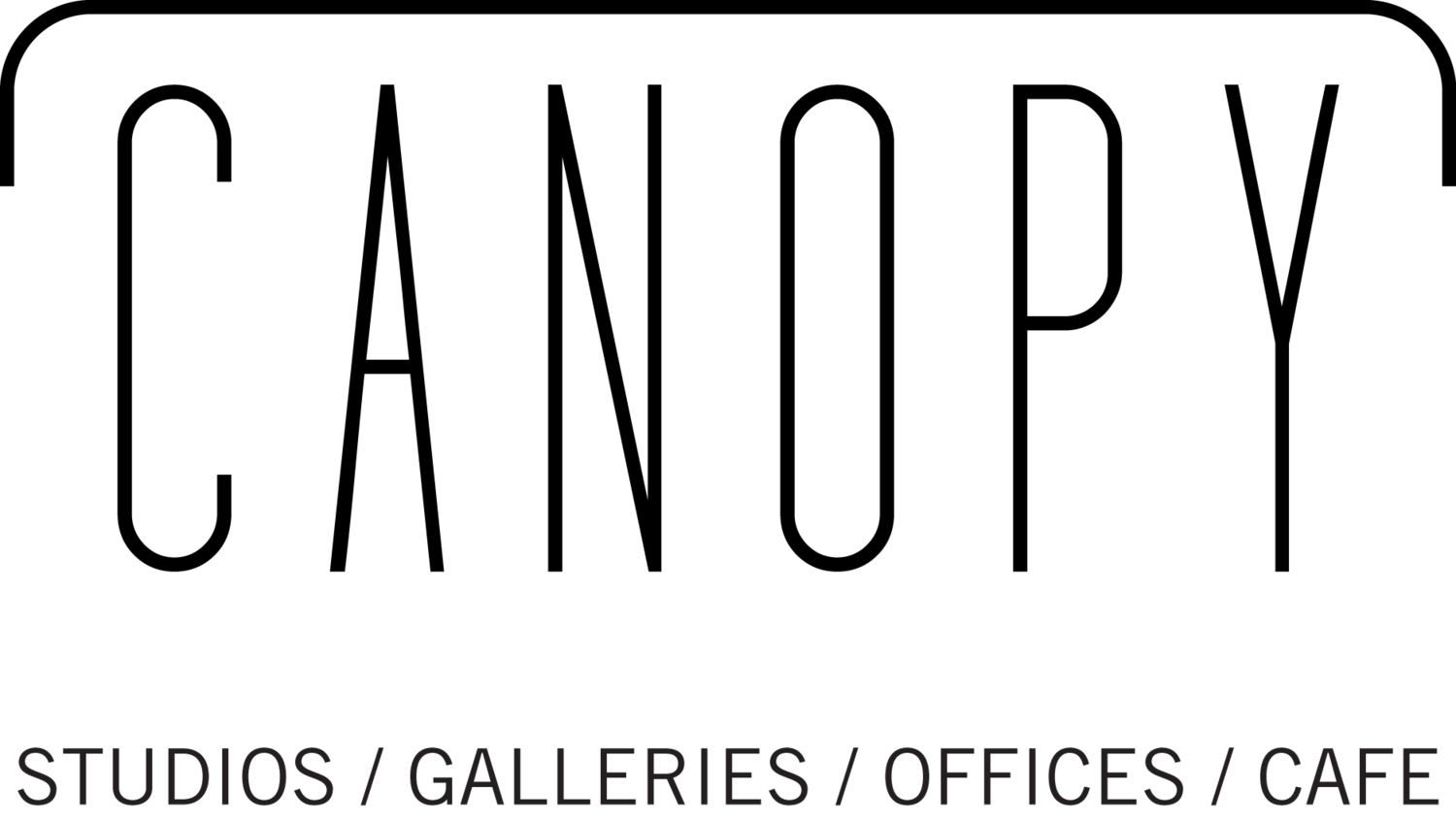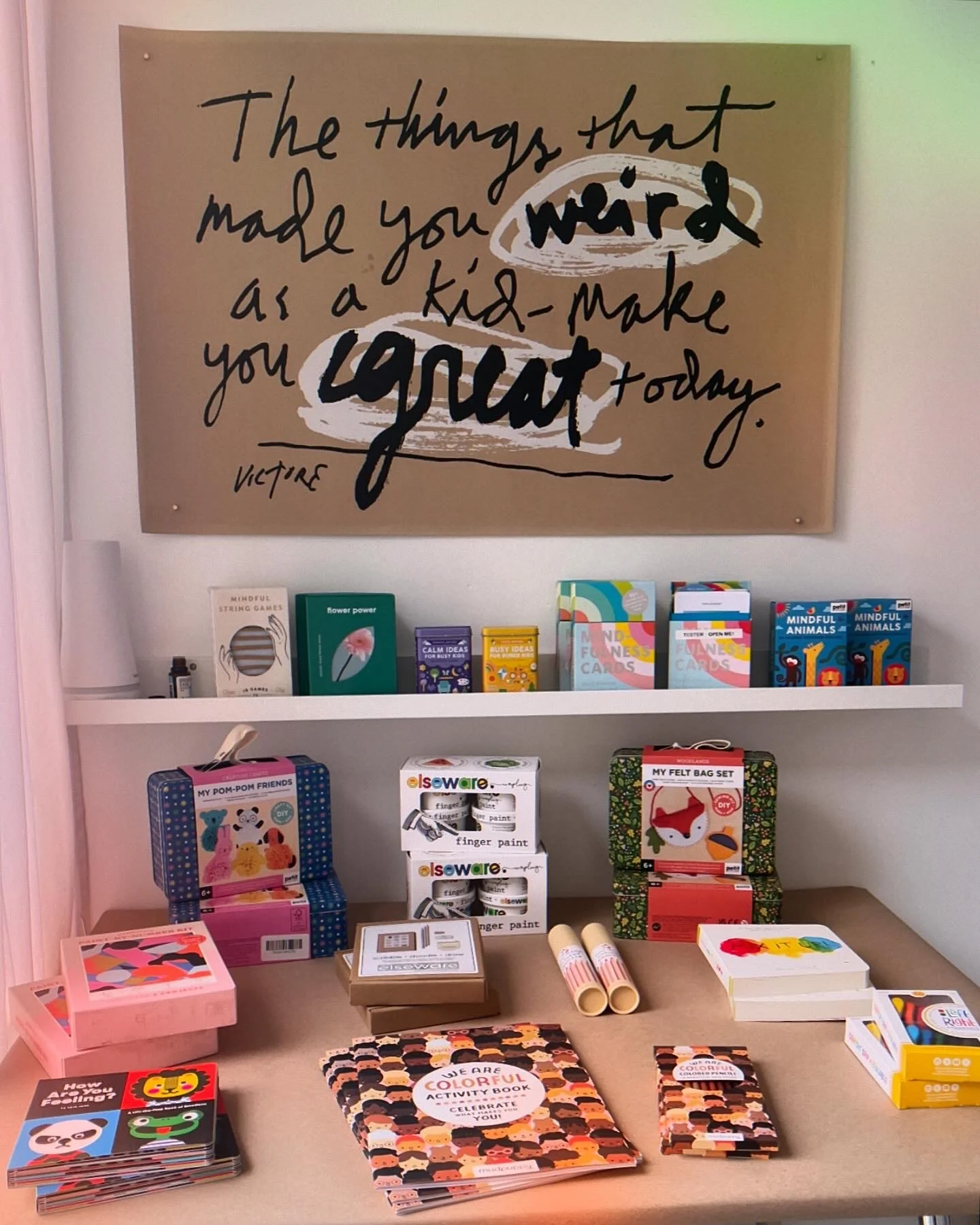At the intersection of creativity and healing is the fascinating work of Kaitlin Maud, a mixed media artist, art-based researcher, and art therapist. With a background that spans working with global brands like Beats by Dre and Nike to advocating for art activism at the U.S.-Mexico border, Kaitlin's journey is as dynamic as it is inspiring.
Currently based in Austin, she’s completing her clinical licensure hours at a middle school while preparing to open her art therapy practice, Maud and Moon, at Canopy. In this interview, Kaitlin shares her unique perspective on art therapy, her research, and vision for community engagement through art.
Interviewer: Can you explain what art therapy is for those who may not be familiar with it? How does it differ from traditional therapy?
Kaitlin: Art therapy is using art in the process of therapy. It is an evidence-based practice, with decades of research from organizations such as the VA to demonstrate its efficacy as a modality. It is a clinical designation, and most art therapists hold a clinical counseling license in addition to their art therapy license.
There are a number of reasons folks might go to an art therapist. Some people do not feel comfortable talking about what they are going through, or they may not be able to. Or with many clients, we may talk about a challenge they are facing, but making a piece about it in tandem can help “show” them a way through. You can think about art as another language that supplements what we are able to discuss (or not) in session. On top of that, art-making is a coping and self-regulation skill you are able to build while in therapy. You can move and use your body to color, mold clay, or weave while in therapy and engage in bilateral stimulation which can feel really soothing.
Interviewer: Tell us about your journey from working with brands like Beats by Dre and Taco Bell to becoming an art therapist? What inspired this career shift?
Kaitlin: I went to art school in the early aughts and became interested in art therapy then! Unfortunately, I graduated at the peak of the economic recession, and grad school was financially inaccessible to me at the time. With my communication design degree, I was able to land a job in advertising that ultimately grew into a career as a researcher and strategist. In 2020, when the world changed again, I found myself with time to daydream and kept coming back to my original interest in art therapy.
I decided to take a couple of psych courses at ACC to dip my toe in and I LOVED it. Enrolled in grad school part-time from there and am finally at the finish line of my career change. Counseling felt like a way to channel my interest in people and culture into a career that was more aligned with my values - helping people, versus helping corporations make more money. And integrating art was essential for me, because I am an artist too! I have experienced so much growth and healing through my studio practice.
Interviewer: How does your background in design research influence your work as an art therapist and artist today?
Kaitlin: I still think like a researcher. It is probably one thing that makes me unique as an art therapist. I am curious about what drives people’s decision-making, how they are making meaning in their lives, and what it all might indicate.
Being a skilled researcher also means asking the right questions at the right time to the right people. In art therapy, a great question can unlock an entirely new perspective. I encourage my clients to get curious about their own lives and experiment with things - both in and outside the safety of the studio.
I also still do research! It just looks different. Earlier this year, a professor and I submitted a paper for publication on the therapeutic benefit of art activism at the border in Juarez, Mexico. I also do art-based research which is a methodology where the data is art. During Open Canopy this summer, I asked visitors to draw a picture of what freedom means to them. Some of the pictures I received are posted on the @maudandmoon Instagram- there are some very clear themes. I love how art can help us express the ineffable.
Interviewer: Your research on art therapy and clinical psychedelics is fascinating. Can you share some key insights from that work?
Kaitlin: I wrote my graduate thesis on using art therapy in tandem with psychedelic-assisted therapy. As more people are turning to psychedelics to help process trauma or treat things like depression, there need to be mechanisms for folks to integrate the experiences they have had. After being in a non-ordinary state, it can be difficult to express the feelings verbally. But as art therapists, it is what we are clinically trained to do! We help people use art to capture that which cannot be expressed in words. The key insight from my research was that while the two modalities have not been studied in tandem, there is a significant body of research that indicates the potential for the two to provide a more holistically therapeutic experience for folks. And if you are reading this interview and you want to fund a study of those two modalities in tandem, I am your girl!
Interviewer: What kind of impact do you hope to have with the group art therapy workshops you plan to offer in 2025?
Kaitlin: There are so few art therapists in Texas. Those of us here really just want more people to know about the work that we are doing. My workshops will be non-clinical and open to the public, because I really just want to introduce people to the tools we have and how they can integrate art into their self-care practice at home. I don’t believe that everyone needs to see an art therapist one-on-one, so many people would (and do!) benefit from doing something like The Artist’s Way.
Interviewer: At Maud and Moon, you’re also running an art therapy concept store. What can visitors expect when they stop by Trailer 9?
Kaitlin: … Perfect follow-up! While I will not be seeing individual clients at Canopy until the spring, I am still working on my own art in my studio and I have had a pop-up shop going during our Open Canopy events. Everything I have curated in the tiny shop are tools for helping people integrate art into their self-care practice. I have art kits for kids and adults, books such as The Artist's Way, and Twyla Tharp’s The Creative Habit, and other tools for tapping into your creativity. I am in the process of creating some sketchbook kits and other DIY art therapy products too, so I hope folks continue to visit!
Interviewer: Looking ahead, what are your goals for the future of Maud and Moon, both as a studio and as a space for community engagement?
Kaitlin: Oh gosh, I am just so excited to continue collaborating with folks in this community. I recently joined the Board of Directors at SAGE Studio, and would love to find ways to work with Art From the Streets and CRAFT in the near future.
One additional group of folks I am keen to work with are creative professionals. I think a lot of people who are artists at heart gravitate toward creative careers like advertising but then let their own personal practice fall by the wayside. (I was one of those people!). Having them come for sessions at Canopy - surrounded by so many working artists across media - will only add to the therapeutic experience.
And I plan to continue my pop-up shop during Open Canopy. I have had great conversations with people about art therapy and the importance of self-care. That is all I could ask for!





